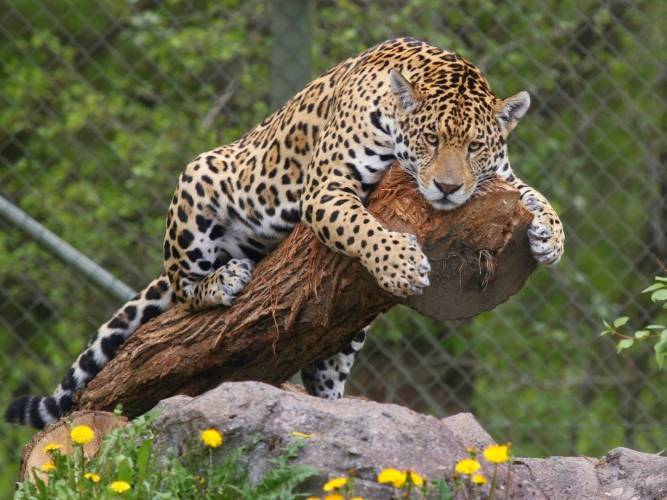The State of Quintana Roo has the largest number of jaguars at the national level with 800 specimens. According to official data, there are 4,000 jaguars left in all of Mexico, and 1,800 of them are located in the Yucatán Peninsula.
Gerardo Ceballos González, a senior researcher at the Institute of Ecology at the National Autonomous University of Mexico (UNAM), reported that according to the first census conducted between 2009 and 2011 and the most recent census, Quintana Roo bears the largest number of this endangered species, followed by Campeche with 600 animals; and 400 in the state of Yucatán.
These figures indicate that at least in the Yucatan Peninsula, the measures taken for the preservation and conservation of the jaguar have worked succesfully.
The expert said that the institute has a camp near the Biosphere of Calakmul, where since 1997 they study the jaguars of the region with the installation of hidden cameras that automatically take photographs in which they can see how many of these big cats live in a certain area, which animals are its prey and how they interact with other fauna in the same environment.
“We’ve also managed to put radio collars on some specimens, which send satellite signals that let us know exactly how many they are, how they move around, what size area is needed to protect them, how do roads or illegal hunting affect them, etc. If we keep up the good work protecting these fantastic animals, we will not have problems of extinction in the long term,” he added.

Gerardo Ceballos González, a senior researcher at the Institute of Ecology at the National Autonomous University of Mexico (UNAM) (Photo: SIPSE)
More protected areas are urgently needed
Ceballos González said that more protected areas are desperately needed, where human beings can coexist with the jaguar through tourism and forestry activities, without changing the use of land to agriculture or livestock.
The specialist said that people need to be educated to protect and not kill the jaguar. As there is a conflict with cattle, people destroy the rainforest to raise cattle and then the jaguar kills the livestock, and men hunt the cat.
The Mexican goverment needs to pay the cattler owners for each animal that the feline kills, through the Secretariat of Agriculture, Livestock, Rural Development, Fisheries and Food (SAGARPA).
In the country there will be two and a half million hectares of new reserves of the jaguar, of which approximately half a million hectares are located within the state of Quintana Roo.

The largest population of jaguars in the whole country live in Quintana Roo! Studies have been carried out with this species in the region since 1997, with the use of hidden cameras. (Photo: SIPSE).
Source: http://sipse.com/




